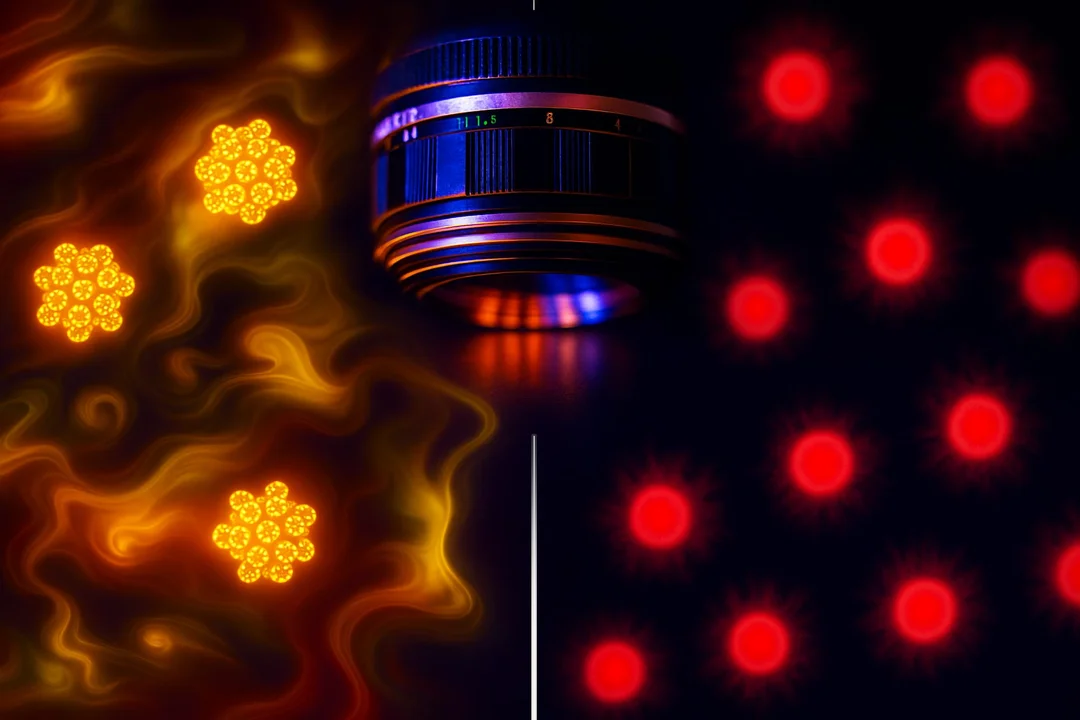
MIT Physicists Achieve Quantum Leap: First-Ever Images of Freely Interacting Atoms Unveiled
In a groundbreaking achievement that blurs the lines between theoretical physics and tangible reality, MIT physicists have successfully captured the first-ever images of individual atoms freely interacting in space. This stunning feat, achieved through a novel technique called atom-resolved microscopy, provides visual confirmation of quantum phenomena that were previously only predicted, marking a major leap forward in our understanding of the fundamental building blocks of the universe.
Why is this important? For decades, scientists have worked with the abstract mathematical models of quantum mechanics, but directly observing these interactions has remained elusive. This new visualization allows researchers to witness the real-world effects of quantum correlations, opening new avenues for exploring exotic quantum phenomena and testing the limits of our current understanding.
The research, published in Physical Review Letters, details how the MIT team, led by physicist Martin Zwierlein, developed a technique to essentially "freeze" atoms in place using a lattice of light. This allowed them to illuminate and capture images of both bosons (atoms with integer spin) and fermions (atoms with half-integer spin) as they interacted.
Bosons, such as sodium atoms, were observed bunching together, forming a wave-like structure consistent with the predictions of Bose-Einstein condensate theory. This phenomenon, where bosons share the same quantum state, was first produced by MIT's Wolfgang Ketterle, who later won the Nobel Prize.
Fermions, such as lithium atoms, exhibited a different behavior. They were seen forming pairs, a crucial mechanism in superconductivity. This is because fermions of the same type repel each other, but opposite fermion types attract and form pairs. "This kind of pairing is the basis of a mathematical construction people came up with to explain experiments. But when you see pictures like these, it’s showing in a photograph, an object that was discovered in the mathematical world," says Richard Fletcher, a co-author of the study and physicist from MIT.
Zwierlein's "atom-resolved microscopy" involves corralling a cloud of atoms in a loose trap created by a laser beam, allowing free interaction. A lattice of light is then flashed on, freezing the atoms, followed by a second laser illuminating them for imaging. The challenge, as Zwierlein explains, was "to gather the light from the atoms without boiling them out of the optical lattice," which highlights the delicate balance required for this groundbreaking technique.
This breakthrough not only provides visual proof of long-held theoretical predictions but also opens the door to exploring even more complex quantum phenomena, such as quantum Hall physics. This is where interacting electrons in a magnetic field display peculiar, correlated behaviors that are notoriously difficult to model.
The implications of this research extend beyond the realm of theoretical physics. The ability to visualize and manipulate individual atoms could pave the way for advancements in quantum computing, materials science, and other emerging technologies. The vivid imagery provides concrete evidence that physics is grounded in tangible reality.
These stunning images offer a glimpse into the bizarre and beautiful world of quantum mechanics, reminding us that the universe is full of surprises. What other secrets will this new technique reveal? Let us know your thoughts in the comments below!